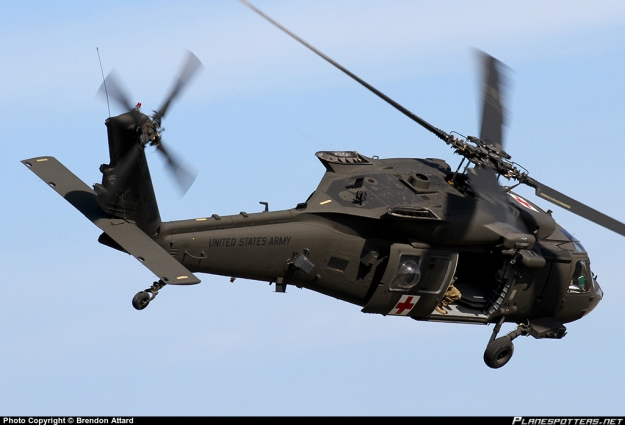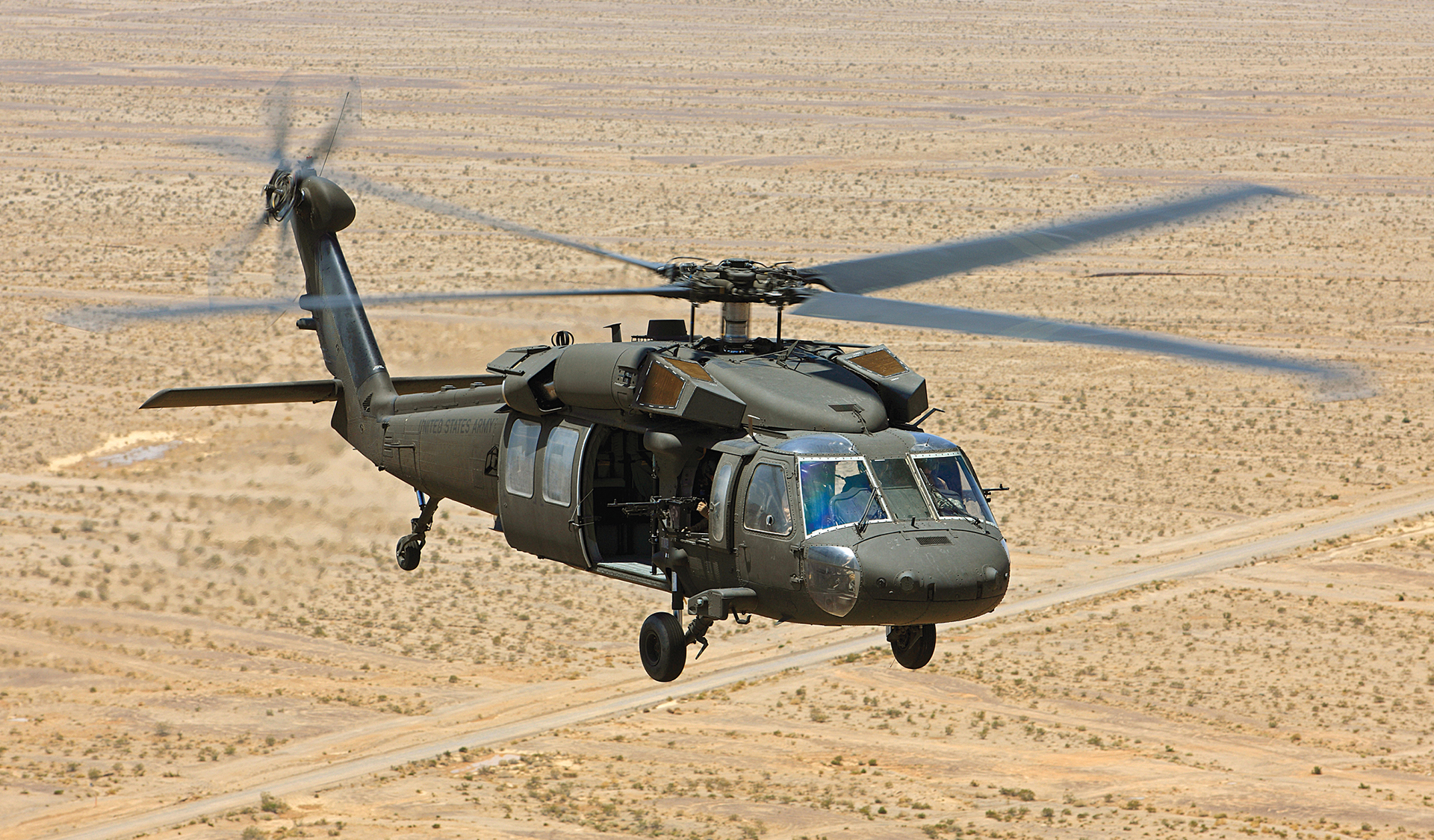Flight Ready: Guaranteeing Optimal Condition for Your UH 60 Helicopter
Flight Ready: Guaranteeing Optimal Condition for Your UH 60 Helicopter
Blog Article
Recognizing the Mechanics and Engineering Behind Uh 60 Helicopters
The UH-60 helicopter, commonly understood as the Black Hawk, stands as a peak of contemporary rotorcraft innovation, embodying a mix of durable design and detailed technicians. As we peel off back the layers of the UH-60's layout, a world of detailed systems and precise engineering comes to light.
History of UH-60 Helicopters
The history of UH-60 helicopters traces back to the late 1970s when the United States Military looked for a versatile and sophisticated utility helicopter to replace its aging fleet. In action to this need, the Sikorsky Aircraft Firm established the UH-60 Black Hawk helicopter. Presented in 1979, the UH-60 rapidly became a staple in military procedures as a result of its remarkable capabilities.
The UH-60 was designed to stand out in a range of missions, consisting of troop transportation, medical discharge, digital war, and unique procedures. Its ability to adapt to different duties made it a beneficial property to the united state Military and various other army pressures worldwide
Throughout the years, the UH-60 platform has actually undertaken numerous upgrades and variants to enhance its performance and maintain pace with progressing mission requirements. These helicopters have actually seen considerable solution in conflicts such as the Gulf War, Afghanistan, and Iraq, showcasing their dependability and versatility in diverse functional environments. The UH-60's rich background is a testament to its enduring heritage as a leading energy helicopter.

Engine and Power Systems
Using cutting-edge propulsion technology, UH-60 helicopters are furnished with advanced engine and power systems to ensure ideal performance and reliability in a variety of functional scenarios. The UH-60, commonly referred to as the Black Hawk, is powered by 2 General Electric T700-GE-701D engines, each qualified of providing up to 1,940 shaft horse power. These turboshaft engines supply the needed drive for the helicopter to perform its missions efficiently, including troop transport, clinical emptying, and combat assistance.

Rotor System and The Rules Of Aerodynamics
How do the blades system and the rules of aerodynamics of UH-60 helicopters contribute to their functional effectiveness and flight capabilities? The rotor system of the UH-60 helicopter plays a crucial duty in giving lift and propulsion. The UH-60 features a four-bladed, completely expressed blades system that enables high maneuverability and stability throughout flight. This design makes it possible for the helicopter to perform a large range of goals, from transportation and clinical discharge to combat operations.
Aerodynamics additionally play a vital duty in the efficiency of UH-60 helicopters. The streamlined fuselage and blades blade style decrease drag, allowing the helicopter to achieve greater speeds and far better fuel effectiveness. The aerodynamic style of the UH-60 likewise contributes to its ability to run in diverse ecological conditions, consisting of hot temperature levels and high altitudes.
Avionics and Flight Control Equipment

In its elaborate control with the rotor system and the rules of aerodynamics of UH-60 helicopters, the avionics and flight control systems develop an essential network of modern technologies shaping the airplane's functional capacities. Avionics encompass the digital systems made use of for interaction, navigating, and monitoring numerous aircraft features. In the UH-60, these systems include digital displays, interaction radios, GPS navigating, weather condition radar, and autopilot systems. These avionics systems provide vital information to the pilots, boosting situational awareness and guaranteeing safe and efficient operation of the helicopter.
The flight control systems of the UH-60 are in charge of equating the pilot's inputs into the suitable modifications to the rotor system, ensuring stable flight and ability to move. These systems consist of hydraulic actuators, servos, and computers that interact to control the tail and primary rotors, as well as other trip control surfaces. By precisely managing the helicopter's flight characteristics, these systems make it possible for pilots to carry out a large range of missions, from transport and search-and-rescue to battle operations, with accuracy and self-confidence.
Role and Applications in Aviation
Avionics systems in UH-60 helicopters include a variety of electronic systems that help in navigating, interaction, YOURURL.com tracking, and controlling various aircraft features. These systems include digital screens, auto-pilot systems, interaction radios, GPS navigation tools, and climate radar. In addition, these systems integrate safety and security attributes such as autopilot modes, surface recognition cautioning systems, and stability enhancement systems to improve the general safety and functional capacities of the UH-60 helicopters in numerous missions, including army transport, medical discharge, search and rescue, and aerial firefighting.
Conclusion
To conclude, the UH-60 helicopter is a flexible airplane with an abundant history and progressed design. Its engine and power systems, rotor system, aerodynamics, avionics, and trip control systems all collaborate to make it a effective and dependable machine. The this UH-60's role and applications in aeronautics are huge, ranging from army operations to browse and save goals. Its continued growth and use show its relevance in the area of aviation (uh 60).
In its intricate sychronisation with the blades system and aerodynamics of UH-60 helicopters, the avionics and trip control systems create a critical network of technologies shaping the aircraft's operational abilities.The trip control systems of the UH-60 are accountable for translating the pilot's inputs right into the proper modifications to the rotor system, making certain secure flight and maneuverability. Avionics systems in UH-60 helicopters incorporate an array of electronic systems that help in navigation, interaction, monitoring, and controlling various aircraft you could try these out features. Additionally, these systems integrate safety features such as auto-pilot settings, surface understanding advising systems, and stability augmentation systems to enhance the overall security and functional abilities of the UH-60 helicopters in different missions, consisting of army transport, clinical emptying, search and rescue, and airborne firefighting.
Its engine and power systems, rotor system, aerodynamics, avionics, and trip control systems all work with each other to make it a effective and reliable equipment.
Report this page